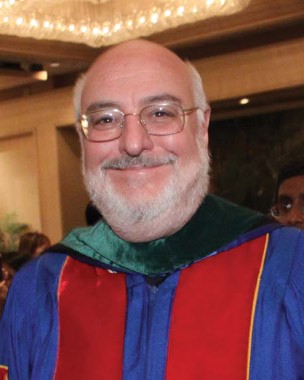Perhaps no other concept in modern medicine is surrounded by as much misunderstanding and controversy as that of death by neurologic criteria, or brain death.
Legal challenges to brain death have spanned the gamut of continuing life support for a legally dead patient to denying a family’s request to continue support for their dead child.
Two recent, highly publicized cases highlight the poles of these controversies and concerns. In November 2013, Marlise Muñoz was declared brain dead. She was 33 years old and 14 weeks’ pregnant. Concordant with the patient’s wishes, the husband requested that the hospital remove the patient from mechanical ventilatory support. Citing Texas law that precludes the withholding of life-sustaining treatment to a pregnant patient, the hospital refused, despite the logical fallacy of withholding life support from a person declared dead.
In December 2013, 13-year-old Jahi McMath was declared brain dead. Her parents obtained a court order to prevent the hospital from discontinuing ventilatory support. A better understanding of the development of the concept of brain death and the incorporation of recent evidence into its determination may reduce the confusion and misunderstandings surrounding the determination of brain death.
Three reports in 1959 describe death of the nervous system and brain death (coma dépassé) building upon clinical and laboratory data from the 1930s relating the cessation of brain blood flow and EEG activity to ensuing apnea and subsequent cardiac arrest (Machado et al. J Med Ethics. 2007;33[4]:197). With the increasing sophistication of critical care support, especially mechanical ventilation, the loss of central respiratory drive no longer meant imminent death, and patients could be supported for long periods of time without recovery of brain function.
In 1968, an ad hoc committee at Harvard Medical School proposed a definition of irreversible coma and brain death (Beecher et al. JAMA. 1968;205[6]:337). They posited that any organ that no longer functions and has no possibility of functioning again was "for all practical purposes dead." The goals of the committee were (1) to reduce the suffering of patients and families and the care burden of hospitals; and (2) mitigate the controversies that surrounded obtaining organs for transplantation.
The committee then set out their rationale for their proposed characteristics of the permanently nonfunctioning brain. Subsequently, in 1976, The Conference of the Medical Royal Colleges and their Faculties in the United Kingdom required a deeply comatose state, irremediable structural brain damage, and irreversible cessation of brain stem function to ascertain brain death (Spinello. J Intensive Care Med. May 2014, in press).
In 1981, the National Conference of Commissioners on Uniform State Laws approved the Uniform Determination of Death Act (UDDA), codifying the legal concept of brain death. Thirty-six states and the District of Columbia have enacted the UDDA, but legal precedent and statutes in the remaining states are consistent with the UDDA. New York and New Jersey require that a family’s religious or moral views be considered in the process following the determination of brain death (Gostin. JAMA. 2014;311[9]:903); in all other states, clinicians are not required to consult with family prior to withdrawing ventilatory support from the brain dead patient.
‘No reports of clinical recovery’
However, the UDDA does not define brain death but rather states that "a determination of death must be made with accepted medical standards" (Wijdicks et al. Neurology. 2010;74[23]:1911). The American Academy of Neurology (AAN) published a practice parameter in 1995 to guide clinicians in the determination of brain death; this was updated by their Quality Standards Committee in 2010 (Wijdicks et al. Neurology. 2010;74[23]:1911). In the updated guidance document, the committee stated: "There are no reports of clinical recovery in patients after the clinical diagnosis of brain death has been determined using the AAN practice parameter."
It is striking, however, that there appears to be an inconsistent approach and criteria for the determination of brain death across hospitals, and even amongst specialties within a hospital (Powner et al. Crit Care Med. 2004;32[6]:1284). Further, in most states, any physician is permitted to ascertain brain death, though some states have now added requirements for specific qualifications and/or confirmation by a second physician (Spinello IM. J Intensive Care Med. May 2014, in press).
These inconsistencies in criteria, process, and experience may be responsible for reports in the lay press of recovery following pronouncement of brain death. Every hospital should have a validated, well-defined process for the evaluation of brain death guided by the AAN practice parameter.
A single exam
In most states, a single exam is required to determine brain death. The clinical setting and the results of imaging studies should be used to determine the duration of observation needed to exclude the possibility of recovery. Given that the patient should be normothermic, have a normal systolic blood pressure, have both a history and imaging studies supporting an irreversible cause of coma, and that drugs and toxins must be excluded as a cause of coma, this observation period is uncommonly less than several hours.



